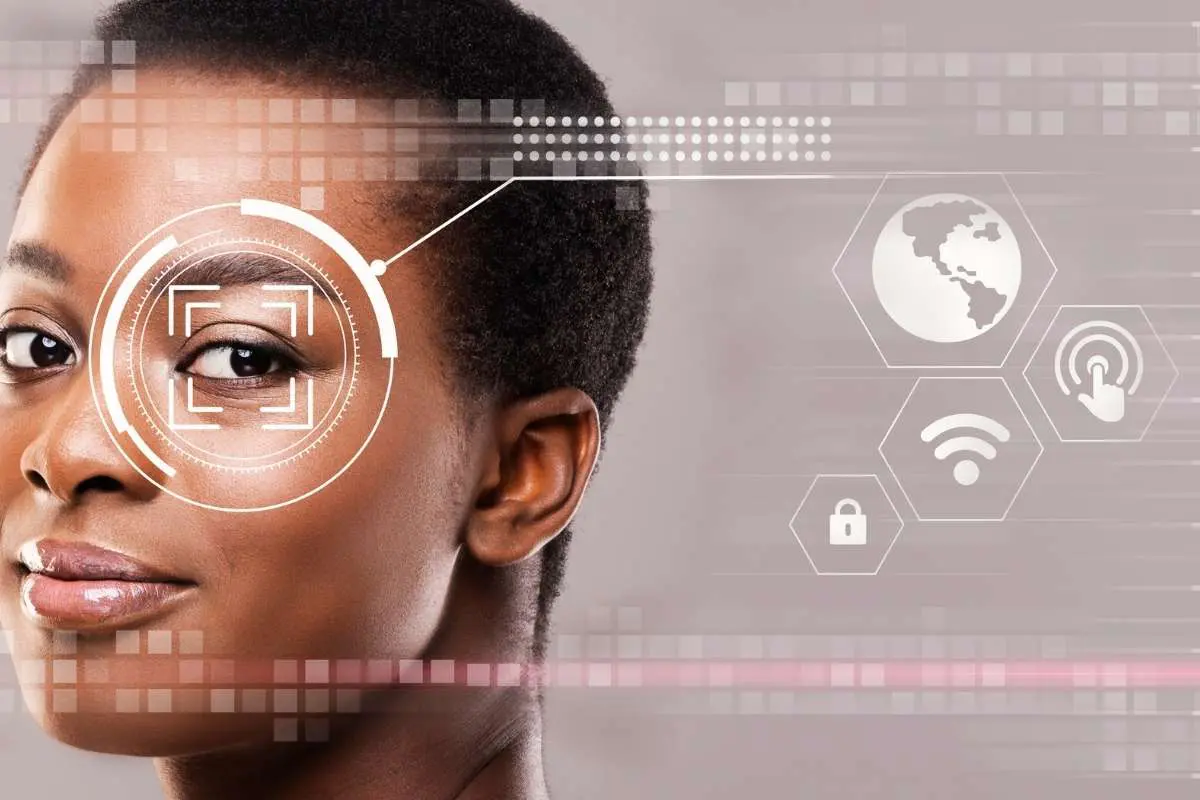
What is Biometric Authentication?
Biometric authentication, a booming digital industry, relies on centuries-old human practices of recognition and acceptance. Signed contracts and fingerprint-dusted crime scenes both offer milestones on the journey to modern biometrics.
The word originates in Ancient Greek and refers to the measurement of life. In essence, biometric authentication performs the same process you do when you recognise someone on the street. The main difference is that biometrics is a vital business operation for countless industries, with a global market expected to top $50 billion by 2024.

How Does Biometric Authentication Work?
Essentially, biometric authentication occurs when a system attempts to recognise someone based on previously measured information. To implement biometric authentication, a business records data, be it fingerprints, face shape, or blood type. Then, it samples a new set of data and compares the two. If they match, the system authenticates them, letting users register themselves, open the door, or access the account. Of course, modern algorithmic systems can analyse swathes of human details for biometric authentication. They use physiological traits, behavioural traits, or both.
Where Does Biometric Authentication Come in Handy?
Biometric authentication forms the first line of defence against intruders, securing important things from offices to information to cash. It plays a vital security role in a growing number of industries, including healthcare, hospitality, and security services themselves. In an increasingly digitising world where everyone has a computer in their pocket, biometric authentication secures both online and physical spaces. In both situations, biometric authentication creates reliable services like banking and clocking in machines.
The vast majority of owners believe biometric authentication to be a very effective means of monitoring and permitting access, both on-premises and cloud locations. Biometric authentication measures a variety of human qualities, from bodies to behaviours, to protect authentic users and keep intruders out.
What is Biometric Authentication Measuring?
Physiological features form the core of biometric identification. Passwords measure what we know, but physiological biometric authentication measures our shape. Current systems measure parts of the eye, like the iris and retina, and not just fingerprints, but hand shape and vein appearance too. On a microscopic level, some measure the shape of DNA molecules and blood cells, and of course, many systems measure the face shape.
Behavioural features form a newer but highly related point of biometric authentication, as physiological characteristics also affect behaviour patterns. Biological biometric authenticators analyse what we do through intelligent algorithms and can even grant access to things before we even approach the scanner. They measure things like your walking gait and your voice. They can also measure the way you type, known as keystroke dynamics, or your written signature. Beyond the appearance of your signature, behavioural biometric authentication can measure the speed, acceleration and pressure you write it with.
This sheer scope forms a core part of what is biometric authentication’s expansive potential. While the system’s capabilities develop and evolve, its main components remain the same.
Biometric Authentication Components
Each biometric authentication system contains three main components. Of these components, users interact with the one hardware element, while the other two use software.
Biometric scanners form the systems only hardware component. Scanners tailored to various body parts or behaviours to incredible levels of detail. The most common biometric scanner in modern culture is the fingerprint scanner, used both in door access and many smartphones. These fingerprint scanners measure around 30 areas of each fingerprint. The specific variables called ‘minutiae,’ include details like cores, pores, and ridges. Most fingerprints have less than 8 of the measured 30 in common.
After biometric scanners record these biological phenomena, biometric authentication software translate them into data points, to be compared with a database of stored biometric profiles.
This third component, databases, allow scanned data to be compared and authenticated. While biometric authentication systems feature no keyholes to be picked, like a conventional lock, intruders and hackers may look to databases to gain entry to areas secured by biometric authentication. Owners thereby strengthen their systems by strengthening their databases.
Biometrical Authentication Shortfalls?
Of course, biometric authentication has some limitations. However, its dynamic digital flexibility gives it a unique ability to recognise and adapt to any irregularities or glitches.
False Results
For fingerprint-based biometric authentication, the rate of false positives or false negatives ranks in the fractions of per cents. Contamination or sweat could interrupt the scanning process, so many newer systems scan and record multiple fingerprints. In the rare event that they don’t function, fingerprint authentication offers multiple attempts to access and verify, ensuring accuracy and reliability.
Biometric Changes
One problem with recording biometric information is that people, unlike keys or passwords, are organic beings. They change appearance based on injuring, ageing, and even hair growth. Fortunately, biometric authentication features highly intelligent software. Face recognition software has improved twenty times over in the last four years and shows no sign of slowing. To combat any current face recognition changes, owners also simply update their databases, as they would update a password or keycard privilege.
Data Security
As mentioned, intruders may target a biometric identification database to gain access or steal confidential data. These databases are highly encrypted and hacker-proof. To secure access between scanner and database, many systems rehash and encrypt data from each, so the system compares unique data points rather than personal records. Simply put, your bank doesn’t access your fingerprint record when you authenticate on your phone. It instead communicates with a module on the phone, which authenticates discreetly.
What is Biometrical Authentication Good At?
Biometric authentication goes straight to the source, checking who a person is rather than whether or not they have a key or a password. An informational tool for the information age, it offers flexible services deployable anywhere.
Beyond securing a single lock, biometric authentication creates dynamic levels of verification. It tailors security to each situation, providing a fully customisable and recordable map of access for later analysis.
With its focus on individuality, its unique cloud capabilities, its instantaneous adaptability, and its informative analytical tools, biometric authentication offers clear and potent advantageous over other systems.
An exciting and ever-developing technology, biometric authentication offers a future-proof solution for any modern business’ verification needs.

Zoë Mouter is the joint owner and director of Egress Systems, a leading provider of time and attendance solutions. With two decades of experience in the workforce management sector, Zoë collaborates with HR, payroll, and IT experts to deliver tailored solutions across a diverse range of industries, including logistics, manufacturing, retail, hospitality, education, charities, waste management, and healthcare.
Before founding Egress Systems, Zoë honed her skills over 10 years as an IT professional at global data and technology companies Experian and Egg. During this time, she worked with multinational clients such as MBNA, Morgan Stanley, and Argos, specialising in the credit card processing sector.
Zoë holds a first-class degree in English Language and Literature from Liverpool University, alongside a Masters in Viking Studies and a TEFLA certification (Teaching English as a Foreign Language to Adults). While her focus has shifted from Viking history to Nordic walking, she enjoys expressing her creativity through ceramics, often crafting unique tea and coffee pots on her pottery wheel.
